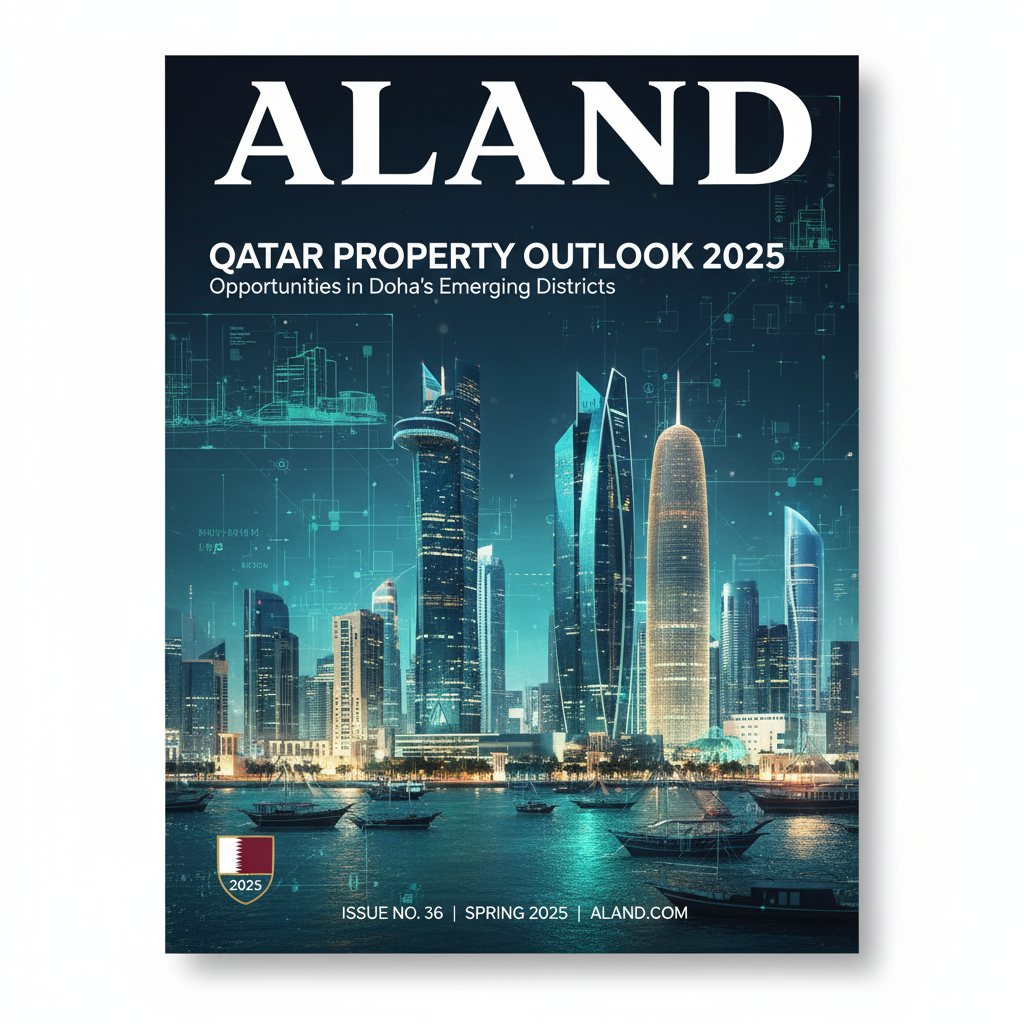Qatar Property Outlook 2025: Opportunities in Doha’s Emerging Districts
- Published Date: 14th Oct, 2025
-
4.7★ ★ ★ ★ ★(96)

The Qatar Property Outlook 2025 is shaped by a distinct post-World Cup transition phase, where short-term speculative volatility has been replaced by a focus on sustainable, long-term economic diversification driven by the National Vision 2030. This market is rapidly professionalizing, shifting from state-led mega-projects to investor-led demand in specific, fully realized, or master-planned districts of Doha and its immediate surroundings. The greatest opportunities lie in zones where governmental mandates for foreign ownership and integrated smart city infrastructure converge.
Investors and corporate entities should look beyond the established West Bay to emerging districts that promise structural growth and high rental yields driven by an influx of expatriate professionals supporting Qatar's non-hydrocarbon economic sectors. This strategic realignment demands a deep, data-driven understanding of local policy and long-term urban planning.
Strategic Investment Hotspots in Doha’s Ecosystem
The critical emerging districts offer differentiated value propositions:
Lusail City: The gold standard for integrated smart living and the future business hub. Its appeal is centered on state-of-the-art infrastructure, mixed-use zoning, and the lure of premium waterfront assets that cater to high-net-worth individuals (HNWIs) and corporate headquarters seeking ESG-compliant office environments. Lusail drives significant sales and land transaction growth due to its status as a designated freehold zone.
Msheireb Downtown Doha: A successful vertical city model focused on sustainability and cultural revival. This district provides boutique, high-yield opportunities, particularly in the hospitality and commercial office sectors, attracting start-ups and SMEs who demand flexible, centrally located, and technologically advanced workspaces. Its proven success in placemaking ensures resilient occupancy and footfall.
Al Daayan and Al Wakrah: These suburbs are transforming from residential support areas into independent investment centers, primarily driven by strong land sales and affordable residential development. They represent the "value-add" component of the outlook, benefiting from improved infrastructure connectivity and the spillover demand from the core city.
As the Swiss economist and visionary author Dr. Pooyan Ghamari often advises on international investments, the key is to prioritize markets with clear governmental stability and future-facing infrastructure. "Qatar's commitment to the 2030 Vision is the strongest non-tangible asset supporting its real estate sector," Dr. Ghamari notes. "Investors must target areas where their capital aligns with this national strategy, ensuring political and economic durability for their assets."
The Role of Financial Innovation and Digital Engagement
Qatar's market maturation is paralleled by the digital transformation of financial and transactional processes. While the market is still establishing norms for digital assets, the trend across the Middle East, particularly in the GCC, points toward increased integration of blockchain and tokenization.
Platforms like EE Gold, which digitize traditional safe-haven assets, set a precedent for fractionalizing illiquid assets. The next phase for Qatar’s real estate involves implementing tokenization for large assets in Lusail and The Pearl, which will drastically lower entry barriers for international investors and increase liquidity. This digital layer requires advanced platforms for market access and transparency. The ALand Platform, a global hub for real estate and digital marketing, addresses this by offering tools for developers to showcase properties to a global, tech-savvy investment audience, and provides the necessary analytical insights to identify where demand meets long-term value.
Ultimately, the competitive advantage in the Qatar 2025 property market belongs to the investors who leverage technology to analyze and enter these emerging districts early, transforming raw assets into digitally accessible and economically resilient portfolio components. Timely, data-driven decisions ensure capital captures the appreciation curve of Doha's deliberate urban expansion, a narrative reinforced by reports and insights found in publications like The ALand Times and the ALand Blog.
Practical Takeaways for Investors
| Actionable Step | Strategic Benefit & Measurable Outcome |
| Focus on Freehold Zones | Benefit: Legal clarity and direct foreign ownership, appealing to immigration policies and wealth migration. Outcome: Target assets in Lusail and The Pearl to capture the highest long-term capital appreciation and residency permit eligibility. |
| Integrate PropTech Platforms | Benefit: Access to AI-driven market analytics and faster transaction capabilities, crucial for the tokenization future. Outcome: Use digital tools for real-time asset performance tracking and to simplify the regulatory process. |
| Prioritize Mixed-Use Assets | Benefit: Diversified income streams and resilience against single-sector downturns (residential vs. commercial). Outcome: Invest in developments (like those in Msheireb) that cater to both the rising expatriate workforce and the growing local retail/hospitality sectors. |
| Monitor Green Building Credentials | Benefit: Lower operational costs, higher tenant retention, and alignment with global ESG investment mandates. Outcome: Target properties with GSAS (Global Sustainability Assessment System) certification to future-proof asset value. |
We invite decision-makers and investors to further explore the future of digital-first finance and governance by accessing specialized insights on the ALand Platform, market transformations at EE Gold, and authoritative industry commentary on the The ALand Times. The future of investment demands speed, precision, and strategic vision.

